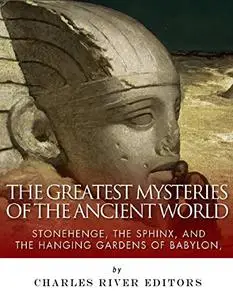The Greatest Mysteries of the Ancient World: Stonehenge, the Sphinx, and the Hanging Gardens of Babylon by Charles River Editors
English | April 20, 2015 | ISBN: 1511803258 | 112 pages | EPUB | 3.42 Mb
English | April 20, 2015 | ISBN: 1511803258 | 112 pages | EPUB | 3.42 Mb
*Includes pictures *Discusses theories attempting to explain the mysteries *Includes bibliographies for further reading *Includes a table of contents On the Salisbury Plain, only a few hours from the hustle and bustle of Central London, remains one of the greatest surviving relics of humanity's ancient past: the mighty stone circle of Stonehenge. Stonehenge is one of the most well-known ancient sites in the world, and an image of it raises numerous associations and emotional responses. Its impressiveness comes not only from its size and remarkable level of preservation, but more so because of the incredible precision with which it was constructed during an era of simple technology and social organization. Obviously, it is a place of great importance—then and now. Of course, Stonehenge has long fascinated the rest of the world too, as people continue to try to understand every aspect of the site and the underlying purpose of it. This involves an understanding of why Stonehenge is located where it is, what the materials consist of, and what archaeology has uncovered about the people who built it. On top of that, Stonehenge is a center of mythology and folklore that has evolved over time, establishing the foundation for a unique spiritual belief system that both celebrates Stonehenge as a “living temple” and challenges the official guardians of the place. One of the oldest and most famous statues of the world, the Great Sphinx at Giza has fascinated people for thousands of years. While the sphinx was a well known mythological creature among various ancient civilizations, the Egyptian statue that is now most famously associated with the creature is full of mysteries that have been endlessly debated throughout the centuries and continue to be hotly contested among scholars. The famous “Riddle of the Sphinx”, told by Sophocles in his play Oedipus Rex in the 5th century B.C., characterized the sphinx as a clever and powerful creature, and even today young kids learn about the story. But the mysteries of the Egyptian statue were discussed even among the ancient Romans; Pliny the Elder, the famous Roman author and philosopher killed in Pompeii during the eruption of Mount Vesuvius in 79 A.D., wrote in his Natural Histories that contemporary Egyptians considered the Sphinx a “divinity” and "that King Harmais was buried in it". In antiquity, the Hanging Gardens, like the Great Pyramid of Giza, were considered both a technological marvel and an aesthetic masterpiece. Ancient historians believed that the Hanging Gardens were constructed around the 7th century B.C. after the second rise of Babylon, which would make them the second-oldest of the Seven Wonders of the Ancient World. However, in 1993, British Assyriologist, Stephanie Dalley, proposed a theory that they were ordered built by an Assyrian king at Nineveh.
Feel Free to contact me for book requests, informations or feedbacks.
Without You And Your Support We Can’t Continue
Thanks For Buying Premium From My Links For Support
Without You And Your Support We Can’t Continue
Thanks For Buying Premium From My Links For Support



